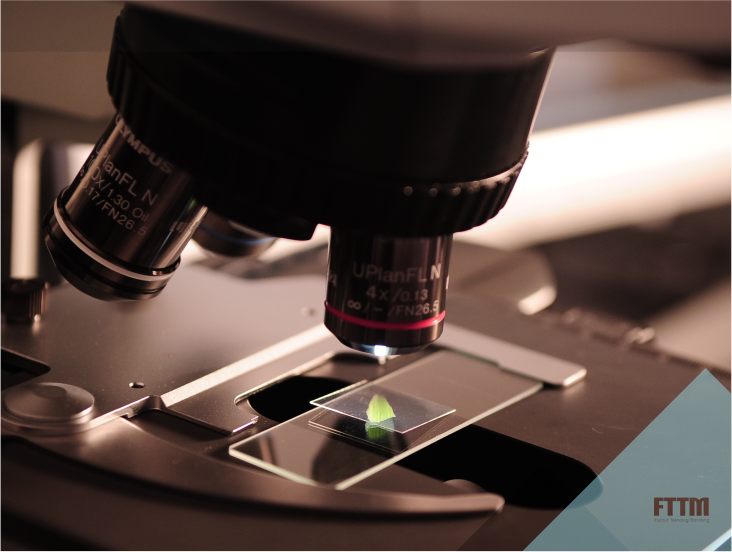Bioflotation of Pb and Zn Sulfide Mineral Using Biosurfactants Producing Bacterium as Bioflotation Reagen
Head of Team : Ir. Edy Sanwani, MT., Ph.D.
Team Members : Ir. Siti Khodijah Chaerun, MT., Ph.D ; Muhammad Abdur Rasyid, ST., M.Phil.
Lead-zinc complex ore is industrially proceeded through flotation process which nowadays demanding more effective yet lower cost reagent. The use of microorganisms as bioreagents for sulphide minerals separation has been an interesting subject in recent years, although reports selectively on galena and sphalerite minerals are still limited. In some of these reseaches, bioflotation has been performed by using different type of bacteria such as Gram-positive and Gram-negative that could give different responds to minerals. Some bioflotation studies tend to use Gram-positive because this type of bacteria has the advantage of producing more biosurfactants compare to Gram-negative. In addition, most of these bioflotation researches have been done using composites of pure minerals, and only few have applied it with real ore.
In this research, bio-flotation using low-grade Pb-Zn complex ore was performed with the help of Citrobacter youngae strain SKC-4 bacterium which is also a new type of bacterium. This study is aimed to understand the effect of Citrobacter youngae strain SKC-4 bacterium on the minerals surface properties and overall bioflotation performance.
Galena and sphalerite concentrates and pure silica minerals were used for the experiment of minerals-bacterial interaction with Citrobacter youngae strain SKC-4 bacterium. Relatively large size of Pb-Zn complex ore obtained from Bogor area, West Java Province, Indonesia was used in this study for bioflotation experiments. This large size of ore require some preparations to meet the suitable size for bioflotation experiments. Size reduction was done in the laboratory by using jaw crusher, roll crusher, and ball mill which products were then sieved to obtain the size fraction of -200 + 325 mesh. The samples used in this study were characterized by XRD (X-Ray Diffraction) and XRF (X-Ray Fluorescence) analyses.
A series of minerals-bacterium interaction experiments in the laboratory was conducted to study the effect of Citrobacter youngae strain SKC-4 bacterium on mineral surface properties. The study of mineral-bacterium interaction was carried out by mixing 25% solid minerals (w/v) and adding 10% (v/v) of inoculated into LB-modified medium by aseptic batch system method. Concentrates (galena and sphalerite), pure silica, and LB-modified medium were first sterilized in autoclave at a pressure of 1.5 Psi and 120oC for 20 min. As much as 25 grams of sterile concentrates and pure silica were collected and mixed with 100 ml of inoculated bacterium into six acidified mediums at pH 2, 3, 4, 5, 7 and 9 and then incubated for seven days with daily sampling. The minerals-bacteriaum interactions were then analyzed by contact angle, FT-IR and SEM-EDS observations.
The bioflotation experiments were conducted using a laboratory 1.5-liter flotation cell at 1000 rpm using 250 grams of -200 +325 mesh ore samples. Bioflotation experiments were conducted under three different variables namely acidity (pH) of solution, conditioning time and bacteria concentration used as bioreagent in bioflotation process. Flotation cell that was used in this experiment is a lab-scale Denver type cell.
The interactions between minerals (i.e. galena, sphalerite, and silica) with Citrobacter youngae strain SKC-4 bacterium at various pH showed a variation in surface properties changes namely hydrophobicity properties characterized by changes in contact angle values. The analysis of hydrophobicity properties of the minerals after interactions with the bacterium would give expectations of the flotation results at various pH. Biofotation experiments of Pb-Zn complex ore using Citrobacter youngae strain SKC-4 as bioreagent obtained optimum results under the conditions of pH 4, conditioning time of 60 minutes, and bacterium concentration of 20%. The Pb grade and recovery obtained under the optimum conditions are 5.24% and 90.13% respectively whilst the Zn grade and recovery are 8.01% and 70.08% respectively. In this study, it was shown that Citrobacter youngae strain SKC-4 was potentially be used as bioreagent, i.e. collector for galena and sphalerite, frother, and depressant for silica, providing an alternative to conventional flotation reagents.

